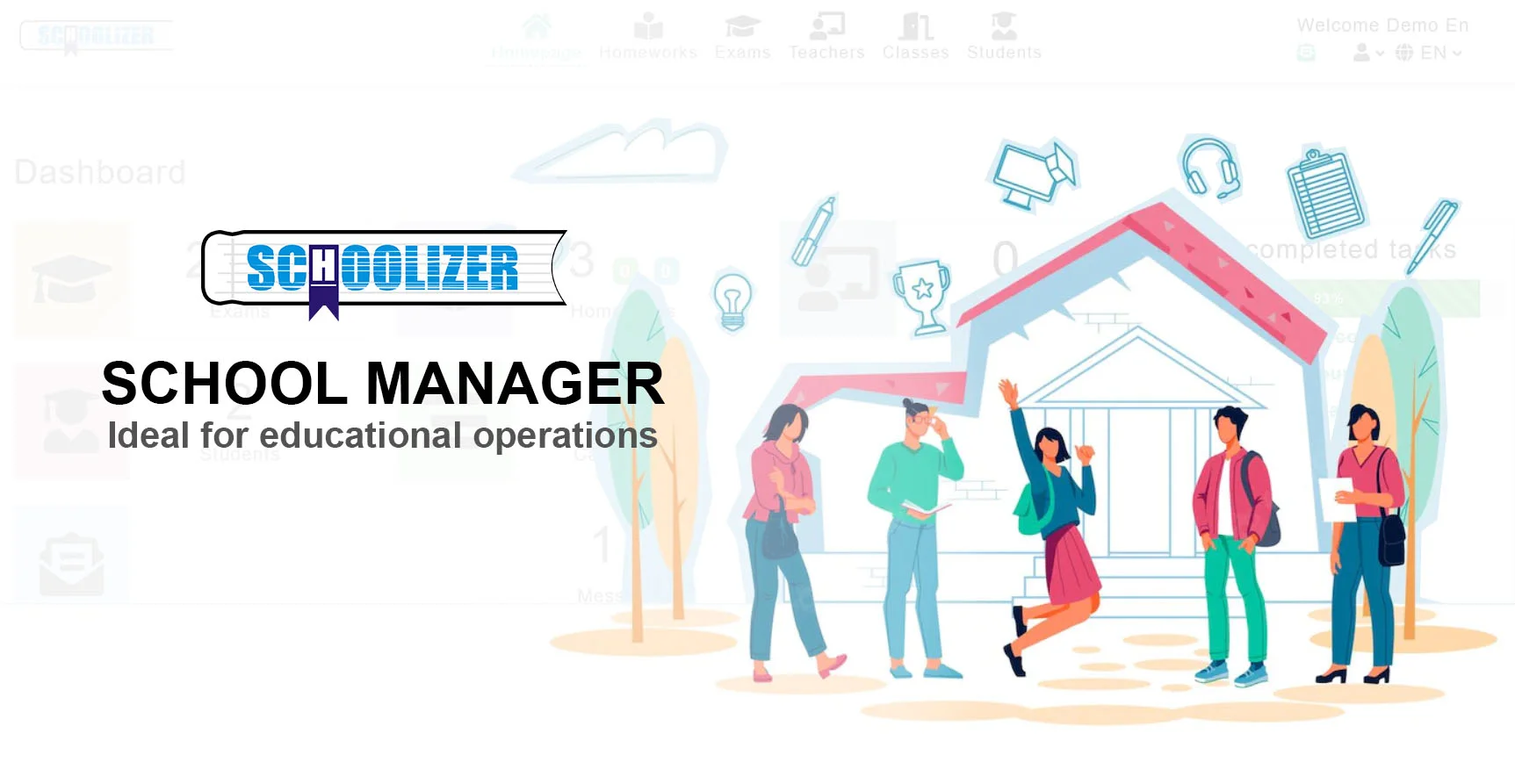Top 10 Classroom Management Strategies for Effective Learning

Are you a new teacher who wonders how to better yourself? Do you always look for strategies to manage your classroom? This blog is for you!
There are so many school management strategies on the internet, but which are the best?
We will discuss the top 10 classroom management strategies to help you become the best teacher out there.
What is the definition of school management?
School management refers to overseeing the administrative and operational aspects of a school or educational institution.
It involves the following:
- Planning
- Organizing
- Directing
- Controlling various resources
- Ensuring educational goals are met
Effective school management is essential for an educational institution's smooth functioning and success.
Read More: Effective Questioning Techniques for Teachers.

Top 10 classroom management strategies
1- Be Their Role-Model
Teachers should exemplify the behavior they expect from their students, fostering a positive and respectful classroom environment.
Here is why this strategy is important:
- Fosters a positive and respectful classroom environment.
- Sets a standard for behavior and attitude.
- Encourages students to emulate positive traits.
- Builds trust and rapport with students.
- Demonstrates desired conduct in various situations.
- Inspires students to strive for excellence.
2- Determine Your Expectations Clearly
Clearly communicate rules and behavioral expectations to students, ensuring they understand what is required of them.
Why do you need this strategy in your classroom?
- Establishes a framework for behavior and performance.
- Sets a standard for academic and social conduct.
- Helps in maintaining a structured learning environment.
- Assists in managing student behavior effectively.
- Supports consistent application of rules and expectations.
3- Use Positive Reinforcement
Encourage positive behavior through praise and rewards, reinforcing a supportive and motivating classroom culture.
Here are the advantages of this strategy:
- Motivates students to exhibit desired behavior.
- Builds students' self-esteem and confidence.
- Strengthens teacher-student relationships.
- Creates a culture of encouragement and support.
- Reinforces a positive classroom environment.
- Enhances student engagement and participation.
4- Integrate Technology and Social Media
Utilize technology and social media to engage students and enhance learning experiences.
But why is this important?
- Enhances student engagement and interest.
- Facilitates interactive and personalized learning experiences.
- Supports differentiated instruction and diverse learning styles.
- Increases student motivation and enthusiasm for learning.
- Expands learning beyond the classroom walls.
- Fosters digital literacy and critical thinking skills.
- Creates opportunities for creativity and innovation.
5- Stay Connected with the Parents
Maintain open communication with parents to build a supportive network and address any concerns or issues effectively.
There are many benefits to staying connected, such as:
- Builds a strong partnership between home and school.
- Enhances parental involvement in students' education.
- Improves student support and academic success.
- Provides insights into students' home environments.
- Strengthens the sense of community and shared responsibility.
- Encourages parental understanding of classroom expectations.
6- Create a Safe Environment in Your Class
Establish a physically and emotionally safe space where students feel comfortable expressing themselves and engaging in learning.
This strategy can help you with:
- Promotes emotional well-being and mental health.
- Fosters a sense of security and belonging for students.
- Encourages open expression and risk-taking in learning.
- Supports positive social interactions and relationships.
- Reduces stress and anxiety among students.
- Enhances student focus and concentration.
7- Encourage Communication Within the Class
Foster open communication among students, promoting collaboration and respect for diverse perspectives within the classroom.
The advantages of communicating are:
Fosters collaboration and teamwork among students.
Enhances social and communication skills.
- Promotes respect for diverse perspectives and opinions.
- Encourages active participation and engagement.
- Facilitates peer learning and knowledge sharing.
- Creates opportunities for student leadership and initiative.
8- Set Consequences for Bad Behavior
Clearly outline the consequences for misbehavior and consistently enforce them to maintain discipline and accountability.
Some of the great benefits of this strategy are:
- Maintains a structured and orderly classroom environment.
- Supports consistent and fair treatment of behavioral issues.
- Helps in addressing disruptive behavior effectively.
- Contributes to a positive and respectful classroom culture.
- Supports the overall well-being and safety of students.
9- Implementing Classroom Management Software
Utilize educational technology and management software to organize and streamline classroom activities, enhancing efficiency and student engagement.
This will help you:
- Streamlines administrative tasks and record-keeping.
- Organizes and manages classroom activities efficiently.
- Provides insights into student performance and behavior.
- Facilitates communication and collaboration among educators.
- Supports personalized and differentiated instruction.
- Enhances student engagement and participation.
10- Stay Up-to-date with New Strategies
Continuously seek professional development and stay informed about new classroom management strategies to adapt and improve teaching practices.
There are many advantages to this strategy, such as:
- Supports continuous professional growth and development.
- Provides access to innovative and evidence-based practices.
- Helps in adapting to changing student needs and demographics.
- Encourages creativity and flexibility in teaching approaches.
- Fosters a culture of lifelong learning and improvement.
Read More: How to Deal with Students on the First Day of School.

What is the Importance of Classroom Management?
The importance of classroom management can be summarized in the following bulleted points:
- Creates and maintains an orderly learning environment in the classroom.
- Fosters meaningful academic learning and supports social-emotional growth.
- Increases students' academic engagement and reduces negative classroom behavior.
- Supports effective teaching and learning by minimizing disruptions.
- Promotes a positive and inclusive classroom culture.
- Contributes to a conducive space for effective teaching and learning.
- Supports students' holistic development and academic success.
- Establishes a foundation for a supportive and collaborative learning community.
Read More: The Positives and Negatives of Utilizing Social Media in Education.
Final Words
Being the best teacher requires learning all the classroom management strategies. We provided the top strategies to help you out.
Visit Schoolizer to learn all about being a teacher, how to manage a classroom, and become a role model for your students.
Read More: Top Tools for School Management.






